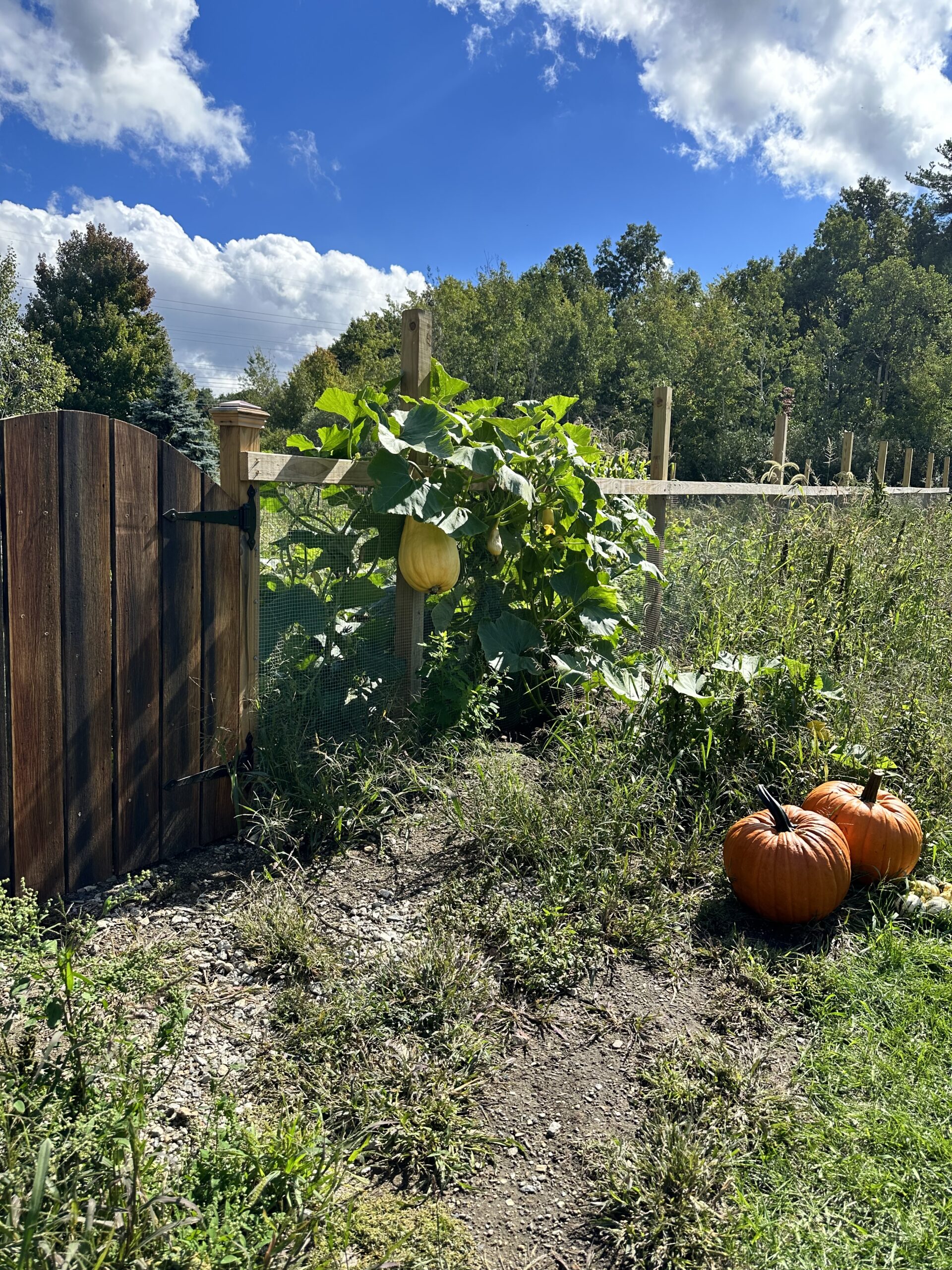Community Garden
Blessing others with what we have.
Hope Chapel exists on a 28 acre parcel on Chocksett Rd. We’ve been here since 2005. The church started in 2002 and met at Chocksett school in the beginning. In the last 20 years, we’ve been blessed with great community connections and partnerships. In 2022, we started a community garden to make use of an underutilized area on our premises.
Now we want to make it available to the community. There are 4′ x 10′ plots available to individuals and families. Check out more information below including upcoming classes about gardening.
Community Plots
lbs donated from our section


free 4′ x 10′ plot available
Guidelines for community use:
- Use only organic chemicals (or no chemicals at all)
- Discard weeds in designated space behind garden wall.
- No planting perennial plants or plants that spread.
- You are responsible for your own plot- planting, weeding, and harvesting.
- No tending to the garden Sunday mornings before noon, due to services; otherwise, you are more than welcome to come any day/time during daylight hours.
Gardening Classes & sharing sessions
During the season, we plan to host classes and sessions to share our collective knowledge and skills with the community. Classes include info about seeds, planting seasons and cycles, as well as canning and preserving. Let us know if you have knowledge that can be shared with others.

Did you Receive free seeds from Us?
We passed out some free seed samples around town. They included Parsnips, Marigolds, and Pak Choy seeds. Here are some instructions to grow them.
Parsnips
- Sow seeds in deep, well-worked soil in full sun after frost in spring. In frost free areas, sow in fall.
- Prepare the bed by turning the soil under to a depth of at least 12 inches. Level with a rake to remove clumps of grass and stones. If your soil is heavy be sure to add plenty of organic matter to make it easier for parsnips’ long roots to penetrate the soil. The soil should be deep and free of stones.
- Sow thinly in rows 12 inches apart and cover with ½ inch of fine soil.
- Firm lightly and keep evenly moist.
- Seedlings emerge in 21-27 days.
- This to stand about 4 inches apart when seedlings are 1 inch high.
- Keep weeds under control during the growing season. Weeds compete with plants for water, space and nutrients, so control them by either cultivating often or use a mulch to prevent their seeds from germinating. Avoid disturbing the soil around the plants when weeding.
- Keep plants well watered during dry periods to promote rapid, uninterrupted growth. Plants need about 1 inch of rain per week during the growing season. Use a rain gauge to check to see if you need to add water. It’s best to water with a drip or trickle system that delivers water at low pressure at the soil level. If you water with overhead sprinklers, water early in the day so the foliage has time to dry off before evening, to minimize disease problems. Keep the soil moist but not saturated.
- Monitor for pests and diseases. Check with your local Cooperative Extension Service for pest controls recommended for your area.
Parsnips
- Sow seeds in deep, well-worked soil in full sun after frost in spring. In frost free areas, sow in fall.
- Prepare the bed by turning the soil under to a depth of at least 12 inches. Level with a rake to remove clumps of grass and stones. If your soil is heavy be sure to add plenty of organic matter to make it easier for parsnips’ long roots to penetrate the soil. The soil should be deep and free of stones.
- Sow thinly in rows 12 inches apart and cover with ½ inch of fine soil.
- Firm lightly and keep evenly moist.
- Seedlings emerge in 21-27 days.
- This to stand about 4 inches apart when seedlings are 1 inch high.
- Keep weeds under control during the growing season. Weeds compete with plants for water, space and nutrients, so control them by either cultivating often or use a mulch to prevent their seeds from germinating. Avoid disturbing the soil around the plants when weeding.
- Keep plants well watered during dry periods to promote rapid, uninterrupted growth. Plants need about 1 inch of rain per week during the growing season. Use a rain gauge to check to see if you need to add water. It’s best to water with a drip or trickle system that delivers water at low pressure at the soil level. If you water with overhead sprinklers, water early in the day so the foliage has time to dry off before evening, to minimize disease problems. Keep the soil moist but not saturated.
- Monitor for pests and diseases. Check with your local Cooperative Extension Service for pest controls recommended for your area.
Marigolds
Marigold may be grown from seed sown early indoors and transplanted outside after frost, or sown directly in the garden after frost, or from potted plants.
Sowing Seed Indoors:
- Sow indoors 4-6 weeks before the last frost using a seed starting kit
- Sow seeds ¼ inch deep in seed starting soil
- Keep the soil moist at 70-75 degrees
- Seedlings emerge in 7-14 days
- As soon as seedlings emerge, provide plenty of light on a sunny windowsill or grow seedlings 3-4 inches beneath fluorescent plant lights turned on 16 hours per day, off for 8 hours at night. Raise the lights as the plants grow taller. Incandescent bulbs will not work for this process because they will get too hot. Most plants require a dark period to grow, do not leave lights on for 24 hours.
- Thin to one seedling per cell when they have two sets of leaves.
- Seedlings do not need much fertilizer, feed when they are 3-4 weeks old using a starter solution (half strength of a complete indoor houseplant food) according to manufacturer’s directions.
- Transplant hardened-off seedlings to the garden after the frost.
- Before planting in the garden, seedling plants need to be “hardened off”. Accustom young plants to outdoor conditions by moving them to a sheltered place outside for a week. Be sure to protect them from wind and hot sun at first. If frost threatens at night, cover or bring containers indoors, then take them out again in the morning. This hardening off process toughens the plant’s cell structure and reduces transplant shock and scalding.
Sowing Directly in the Garden
- Direct sow seeds in average soil in full sun after all danger of frost. In frost free areas, sow from fall to early spring. In the Deep South, a spot that receives shade during the afternoon helps protect plants from excessive heat.
- Prepare the bed by turning the soil under to a depth of 8 inches. Level with a rake to remove clumps of grass and stones.
- Most plants respond well to soils amended with organic matter. Compost is a wonderful form of organic matter with a good balance of nutrients and an ideal pH level, it can be added to your planting area at any time. If compost is not available, top dress the soil after planting with 1-2 inches of organic mulch, which will begin to breakdown into compost. After the growing season, a soil test will indicate what soil amendments are needed for the following season.
- Sow seeds about 6 inches apart and cover with ¼ inch of fine soil.
- Firm soil lightly, water and keep evenly moist.
- Seedlings emerge in 7-14 days.
- Thin plants to stand 9-12 inches when seedlings are 1 inch high.
Planting Potted Plants:
- Select a location in full sun with good rich, moist, well drained organic soil. In the deep South, a spot that receives shade during the afternoon helps protect plants from excessive heat.
- Prepare the bed by turning the soil under to a depth of 8 inches. Level with a rake to remove clumps of grass and stones.
- Most plants respond well to soils amended with organic matter. Compost is a wonderful form of organic matter with a good balance of nutrients and an ideal pH level, it can be added to your planting area at any time. If compost is not available, top dress the soil after planting with 1-2 inches of organic mulch, which will begin to breakdown into compost. After the growing season, a soil test will indicate what soil amendments are needed for the following season.
- Dig a hole for each plant large enough to amply accommodate the root ball.
- Set level with the surrounding soil. Fill with soil to the top of the root ball. Press soil down firmly with your hand leaving a slight depression around the plant to hold water.
- Water thoroughly, so that a puddle forms in the saucer you have created. This settles the plants in, drives out air pockets and results in good root-to-soil contact.
- Use the plant tag as a location marker.
Pak Choy
- For optimum flavor, grow in cool weather.
- Sow in rich soil early in spring when the ground can be worked.
- Sow in rows 6-8 inches apart. Seeds can be broadcast thinly along rows or wide bands. Sow ¼ inch deep. Firm lightly and keep soil evenly moist.
- Seedlings emerge in 10-14 days depending on soil and weather conditions.
- For continuous crops, resow every other week until the weather gets too warm.
- In hot weather, provide shade to slow bolting.
- For a mature harvest, thin to stand to 6 inches apart when 1-2 inches high. If growing as a baby leaf, do not thin.
